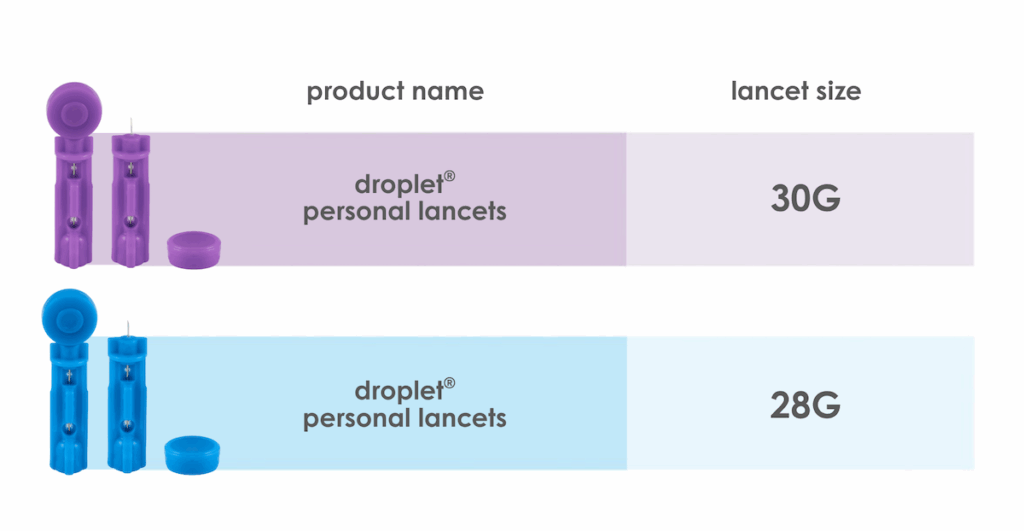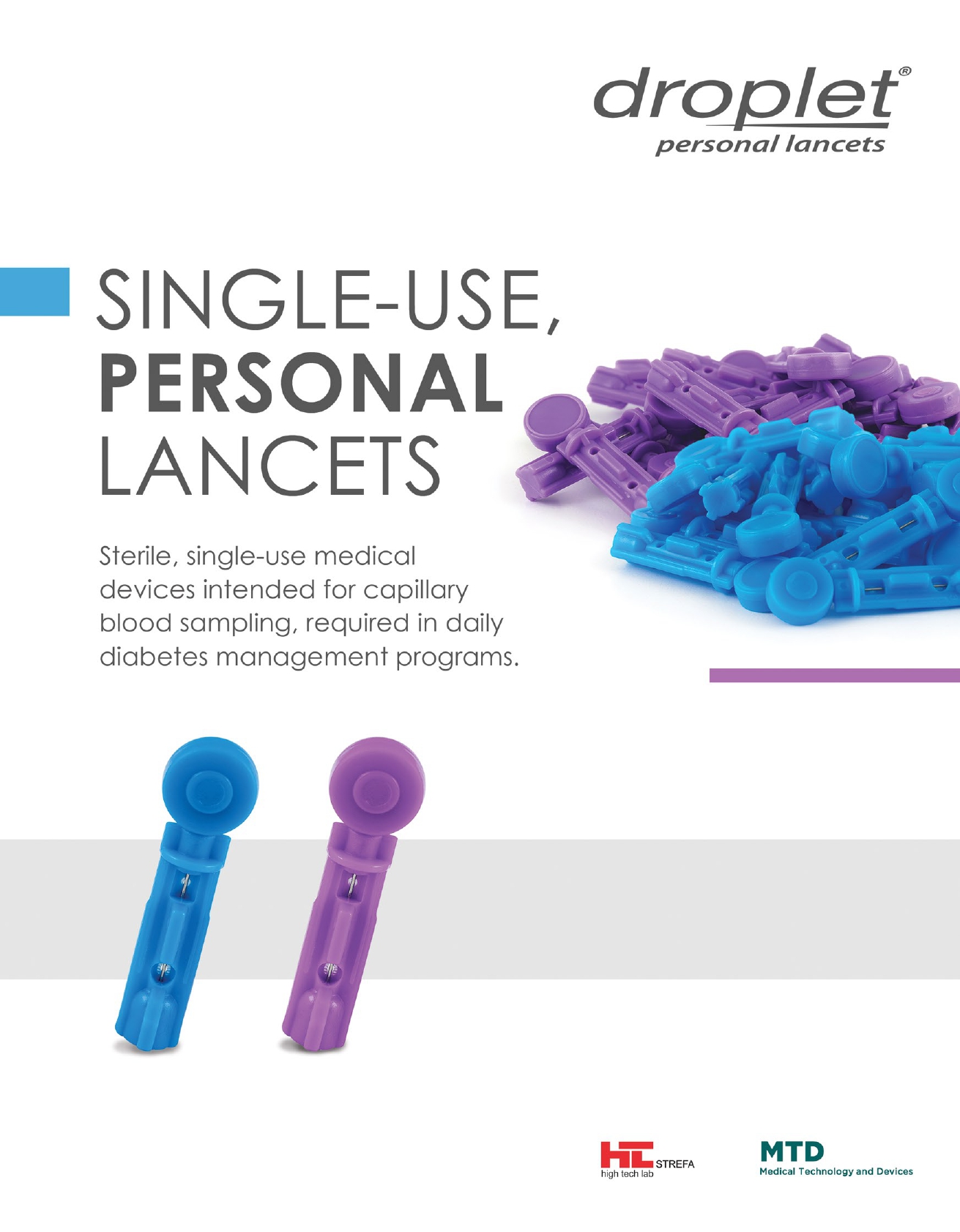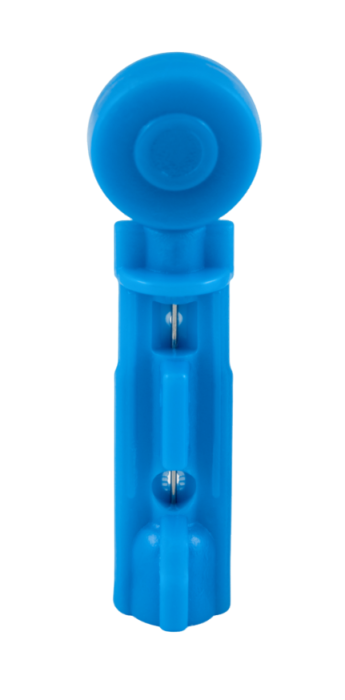droplet personal lancets are sterile, single-use medical devices, intended to be used with a lancing device by lay users for capillary blood sampling.
Key features

Easy to use
- User-friendly design, easy to handle.
Compatible
- Can be used with the most popular lancing devices.1
- Recommended for patients with different skin types.2
Comfortable
- Electro-polished silicone coated needle designed to cause less pain.3
- 3-beveled needle tip designed for greater comfort of users.3
Safe
- Needles are equipped with a protective needle cap.
- Needles are sterilized using irradiation.
Available in two versions:

Compatibility
droplet personal lancets are recommended to be used with droplet lancing device, however they are compatible with the majority of lancing devices available on the market. See the compatibility statement for more information.
Single use only
Remember to use a new lancet every time! Lancets are designed to be only used once and then disposed of in a safe way. Re-usage of the lancets makes them dull or bend the tip of the lancet, causing bruising, bad wound closure, and scarring.4
How to use droplet
personal lancets:
This is a medical device. Use it according to the instructions for use and label.

See full instruction for use:

Product brochure
The information above is also available as a product brochure in PDF format.
Sources:
- HTL-STREFA S.A. Data on file. List of lancing devices that work with droplet® personal lancets type 560 manufactured by HTL-Strefa S.A. Based on HTL-STREFA S.A. internal study: KJ-S AJ 079 12 560.
- Żurawska G. Single-blind, Randomized, Singlecentre Study to Investigate the Characteristics of Different Personal Lancets on Blood Volume and Perceived Pain in Patients with Diabetes Mellitus. Diabetes Manag. (2016) 6(3). 066-070.
- Kocher S., et al. Comparison of lancing devices for self-monitoring of blood glucose regarding lancing pain. J Diabetes Sci Technol. 2009 Sep 1;3(5):1136-43.
- WHO guidelines on drawing blood: best practices in phlebotomy. Available on: http://www.euro.who.int/__data/assets/pdf_file/0005/268790/WHO-guidelines-on-drawing-blood-best-practices-in-phlebotomy-Eng.pdf?ua-1.



